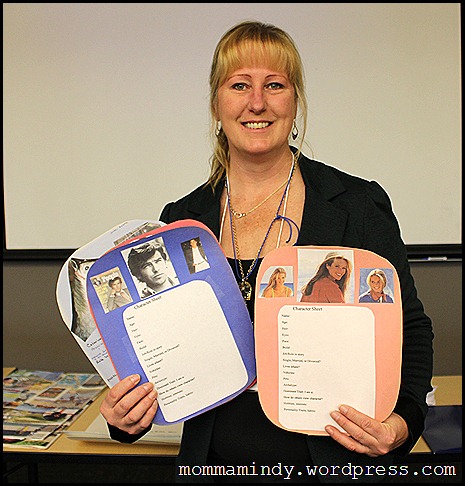I’m always amazed that talented authors will share their writing secrets. For free.
I attended a few sessions of the Northwest Bookfest in Kirkland, WA in November. Image tables of books, hordes of writers and workshops with all the information you need to become an overnight best-selling sensation. OK, everything is true except that last part. I made that up because we all have that dream, right?
Success doesn’t happen overnight, nor does it happen quickly. Writers must always learn, grow, and improve.
My Cool Tool for today was shared by Darlene Panzera, author of several titles including the Cupcake Diaries, in her workshop “Building a Novel.”
Novelists should develop unforgettable characters that become friends with the readers and become a part of their favorite memories. The task shouldn’t be too hard for a people group considered by others to be “characters.”
Darlene said, “Great characters have impact on the world around them and cause change in others.” Those changes become subplots.
To develop her characters, Darlene creates Character Cards. Each main character has their own colorful card with pics and critical details. That way you don’t accidentally change someone’s eye color, the name of your heroine’s cousin, or the kind of car she drives.
She provided a list of details that can be included while creating your characters.
Name:
Age:
Job:
Role in Story:
Archetype:
Single/Married/Divorced:
Hair:
Eyes:
Face:
Build/Figure:
Imperfections:
Mannerisms, Habits:
Self Image: I am __________
How do Others View Character?
Brief Past History:
External Conflicts:
Internal Conflicts:
Strengths:
Weaknesses:
Biggest Fear:
What will be your character’s arc over course of story? How will character grow, become wiser or change?
What motivates character? (Core value)
Goal: What does the character want?
What is the character’s problem or need?
How does she feel about it?
Why must character reach goal, come to decision, or find new insight?
How does character view others? Attitude?
Who are friends and why?
Who are enemies and why?
Where does character live?
Home – Interior and Exterior:
Education?
Religion or lack of it?
Favorite food/color/music?
Vehicles?
Hobbies/interest/special skills?
Pets?
Most embarrassing incident in past?
Best thing happened to them? Worst?
What influences of history would bear directly and indirectly on the character’s daily existence?
What are the major events or attitudes in the character’s life that have made him react to life in specific ways?
What is their family like?
How much influence do they have on the character?
What is their favorite spot in home or town?
After you’ve created your characters in your imagination, they may take over in ways you hadn’t imagined.
Readers live vicariously through believable characters and overcome obstacles, heal hearts, and fall in love. And, when they close the back cover and step back into their real worlds, they’ll bring those experiences with them.
A collage is another visual Cool Tool Darlene has used. This is great start for the brainstorming stage of your novel. Cut and paste to create the world your characters will live in, using news headlines, locations, cars, houses, hobbies, and bits of interesting dialogue. It spurs on creativity during each stage of the writing process.
Imaginary friends aren’t just for children – they’re unforgettable characters created by novelists.
For further study:
- Creating Unforgettable Characters In Fiction by Harvey Chapman on his blog Novel Writing Help: the facts about fiction
- Writing Fiction: The Three Types of Lead Characters from James Scott Bell’s book Write Great Fiction: Revision & Self-Editing
- Crafting Unforgettable Characters by K.M. Weiland (52 pages of valuable instruction)
- Grit, Wit and “It” by James Scott Bell









Leave a Reply